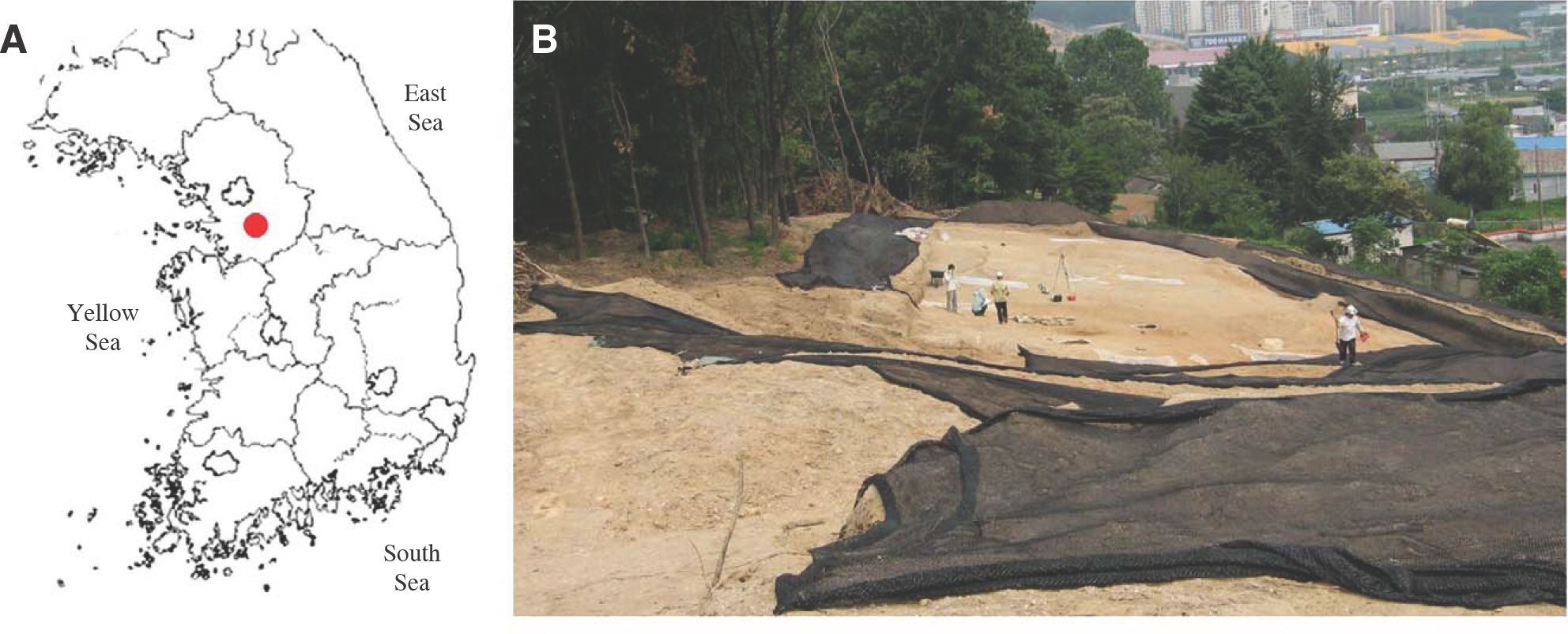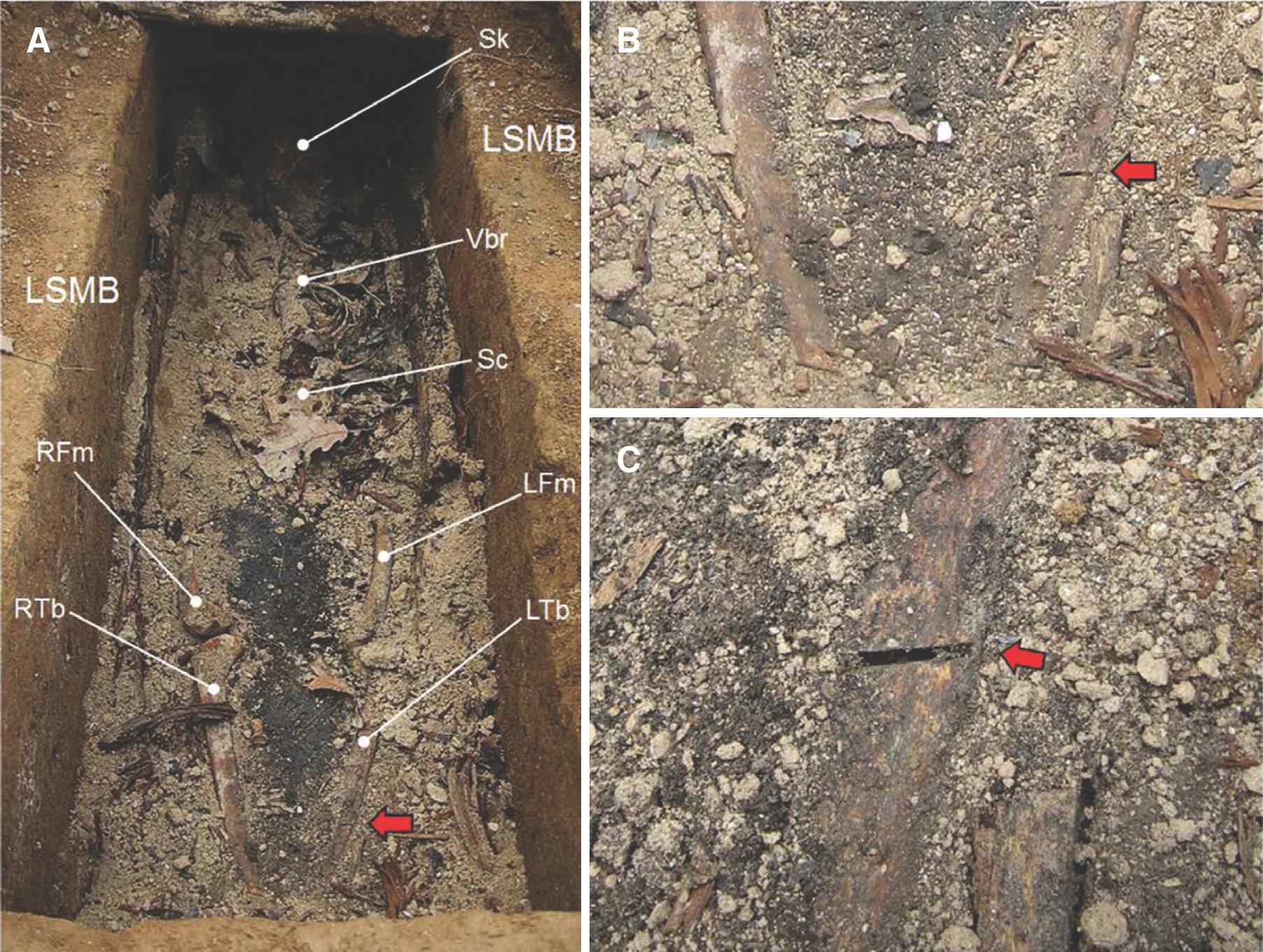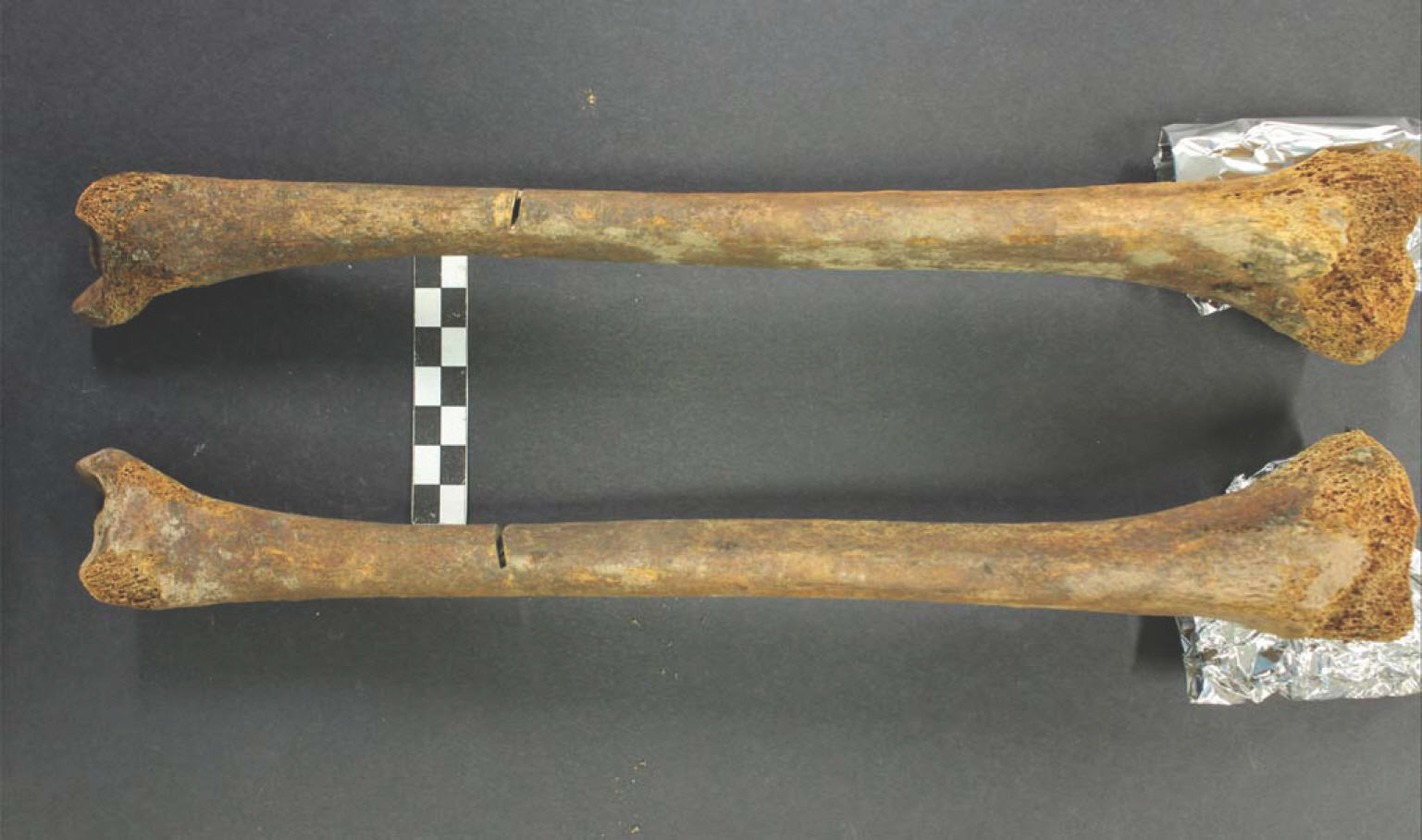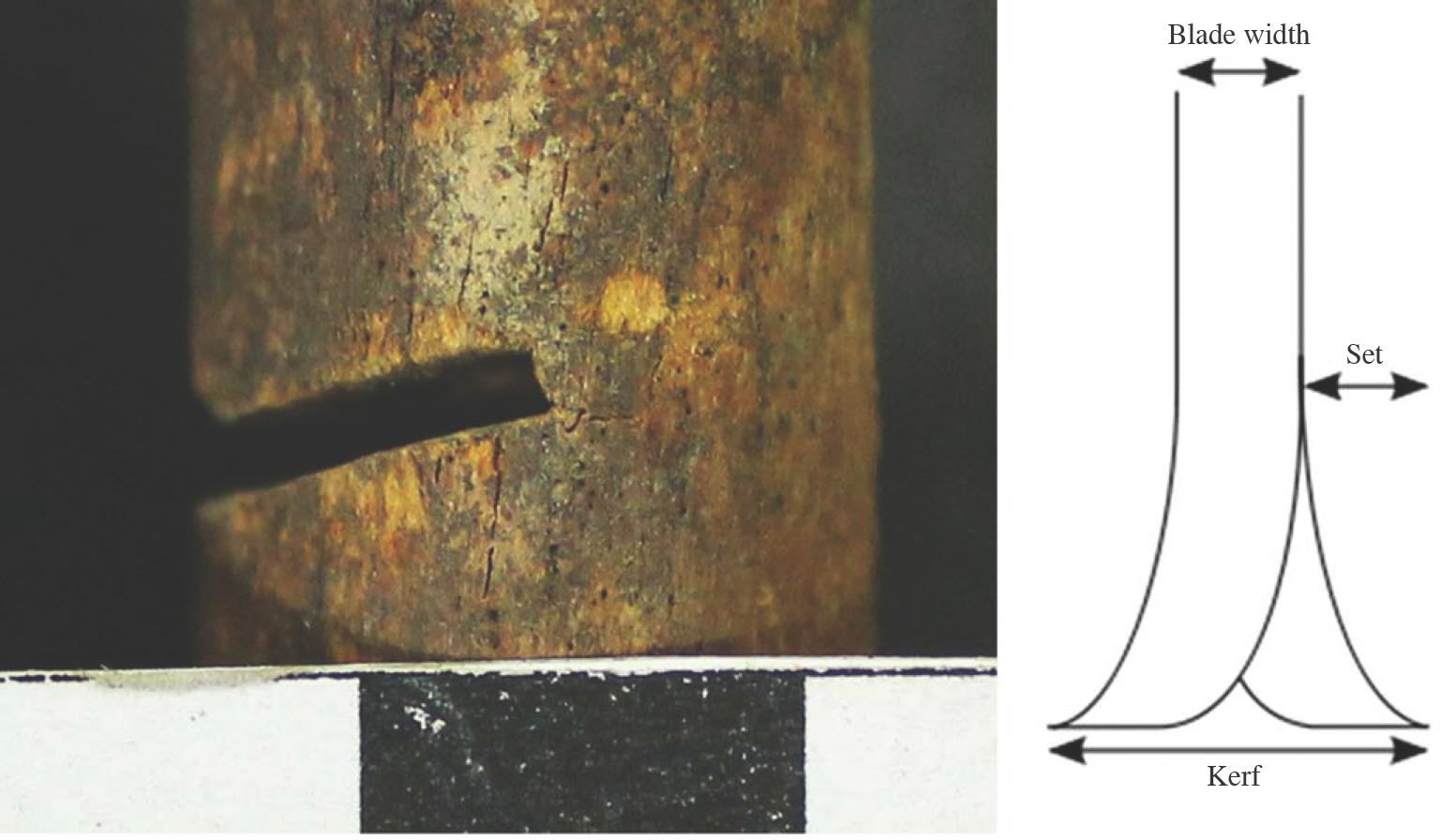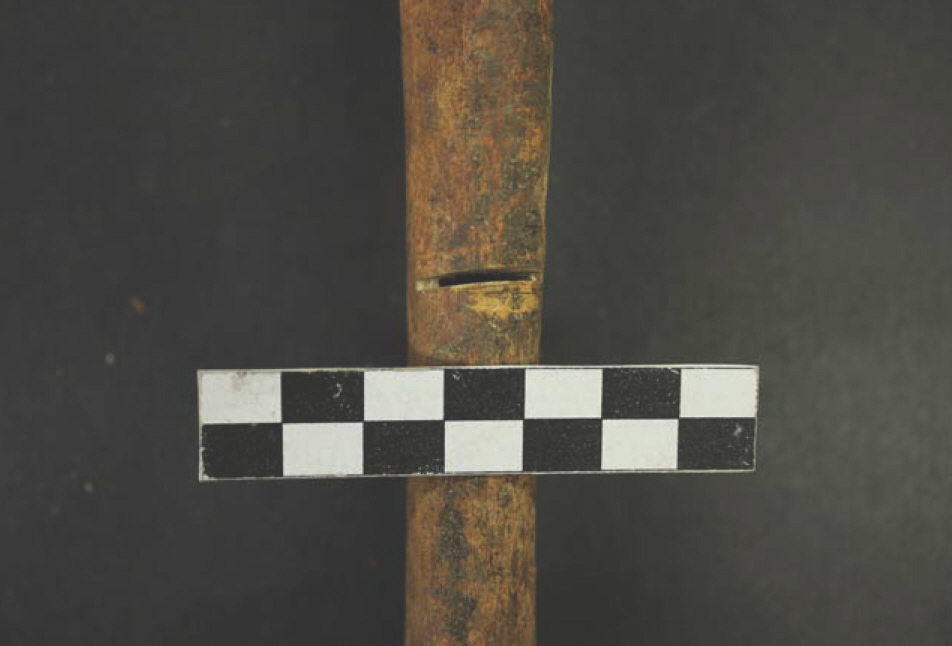Korean J Phys Anthropol.
2014 Mar;27(1):29-37. 10.11637/kjpa.2014.27.1.29.
Forensic Anthropological Study on Saw Marks Appearing on the Tibiae of a Joseon Skeleton
- Affiliations
-
- 1Department of Anatomy, Ewha Womans University School of Medicine, Korea.
- 2Department of Anatomy, Seoul National University College of Medicine, Korea. cuteminjae@gmail.com
- 3Department of Anatomy, Dankook University College of Medicine, Korea.
- 4Institute for the Translation of Korean Classics, Korea.
- 5Central Institute of Cultural Heritage, Korea.
- 6Kyujanggak Institute for Korean Studies at the Seoul National University, Korea.
- KMID: 1702842
- DOI: http://doi.org/10.11637/kjpa.2014.27.1.29
Abstract
- Tomb with lime-soil mixture barrier (LSMB) was constructed by the people from upper class people of Joseon Dynasty. The coffin of LSMB was surrounded by hard concrete barriers, being successfully protected from outside invasions until the archaeological excavation begins. The human remains were extremely preserved well, providing important information on the health and illness of the people of Joseon dynasty. Recent investigation into human skeletons from LSMB in Yong-in city was another forensic anthropological case that was very meaningful to our research. During the examination on the elderly Joseon female bones, we discovered unusual saw-marks on the shaft of both tibiae. We could not find any osteological evidences suggestive of healed bone process. Considering archaeological and anthropological findings altogether, the occurrence time of saw-marks was considered to be perimortem period. However, as for why such a saw mark was made on the tibiae, we did not get any information about it. We expect that this report facilitate other researcher to do explore the usefulness of forensic anthropology examination on the similar human skeleton cases identified in various archaeological ruins.
Keyword
Figure
Reference
-
References
1. Buikstra JE, Ubelaker DH. Standards for data collection from human skeletal remains. Arkansas archeological sur-vey research series No. 44. Fayetteville: Arkansas archeological survey;. 1994.2. Shin DH, Oh CS, Kim Y-S, Hwang Y. Ancient-to-Modern Secular Changes in Korean Stature. Am J Phys Anthropol. 2012; 147(3):433–42.
Article3. Fujii A. On the relation of long bone lengths of lower limb to stature. Bulletin;. 1960.4. Krogman WM, Iscan MY. The human skeleton in forensic Medicine. Charles C. Thomas. Illinois: Springfield;1986.5. Lovejoy CO, Meindl RS, Pryzbeck TR, Mensforth RP. Chronological metamorphosis of the auricular surface of the ilium: a new method for the determination of adult skeletal age at death. Am J Phys Anthropol. 1985; 68(1):15–28.
Article6. Oh CS, Koh B-J, Yoo DS, Park JB, Min SR, Kim Y-S, et al. Academic dispute on the funeral rites of Joseon society is settled by ancient DNA analysis of a Korean mummy. Anatomical Records.(In press).7. Kim Y-S. Kim MJ, Yu T-Y, Lee IS, Yi YS, Oh CS, et al. Bioarchaeological investigation of possible gunshot wounds in 18th century human skeletons from Korea. Int J Osteo-archaeol.DOI: 10.1002/oa.1301. (In press).8. Kim Y-S. Oh CS, Lee SS, Kim MJ, Lee SD, Shin MH, et al. Anthropological Study on Human Skeletons from Joseon Tomb for Confirming Ryu Ja-Gwang, a Famous Historical Figure of Medieval Korea. Korean J Phys Anthropol. 2011; 24:85–95. Korean.9. Ohkubo H. The Outline about the Criminal Law in Edo Era (1742∼1870). The Bulletin of Musashino Gakuin Graduate School. 2008; 1:7–15.
- Full Text Links
- Actions
-
Cited
- CITED
-
- Close
- Share
- Similar articles
-
- Anthropological Study on Human Skeletons from Joseon Tomb, for Confirming Ryu Ja-Gwang, a Famous Historical Figure of Medieval Korea
- A Life and Death of the Leprosy Patients in Joseon Society Considered from the Anthropological Perspective
- Evidence of Periostitis in Joseon Dynasty Skeletons
- Construction of Medieval Skeleton Collections with Human Remains from Tombs of Goryeo Dynasty, Korea
- Forensic Archeological Analysis on Human Remains from the Peculiar Burial Situation of Archaeological Excavation Site in Joseon Dynasty

